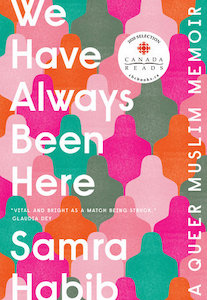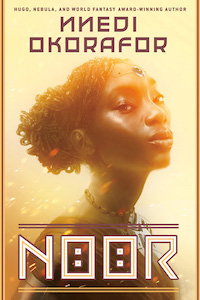“We Have Always Been Here: A Queer Muslim Memoir” by Samra Habib
Samra Habib has spent most of their life searching for the safety to be themself. As an Ahmadi Muslim growing up in Pakistan, they faced regular threats from Islamic extremists who believed the small, dynamic sect to be blasphemous. From their parents, they internalized the lesson that revealing their identity could put them in grave danger.
When their family came to Canada as refugees, Samra encountered a whole new host of challenges: bullies, racism, the threat of poverty, and an arranged marriage. Backed into a corner, their need for a safe space–in which to grow and nurture their creative, feminist spirit–became dire. The men in Samra’s life wanted to police them, the women in their life had only shown them the example of pious obedience, and their body was a problem to be solved.
So begins an exploration of faith, art, love, and queer sexuality, a journey that takes them to the far reaches of the globe to uncover a truth that was within them all along. A triumphant memoir of forgiveness and family, both chosen and not, We Have Always Been Here is a rallying cry for anyone who has ever felt out of place and a testament to the power of fearlessly inhabiting one’s truest self.
Review
This was a really interesting memoir. There was so much to learn and understand about Samra and their past. I really liked learning about their history and their exploration of their own queer identity. I’m glad that Samra was able to find themselves by finding other queer Muslims to be around. I also recommend checking out their photography project (which Samra talks about near the end of the book) Just Me and Allah which documents the lives of LGBTQ Muslims.
Note: Samra’s pronouns are now they/them. Previous publications about Samra and descriptions of their memoir may refer to Smara with other pronouns, but they/them is correct and should be used.
Book Details

- Author’s Website
- Samra Habib
- Publisher / Date
- Viking, June 2019
- Genre
- Memoir
- Page Count
- 272
- Completion Date
- July 2, 2023




